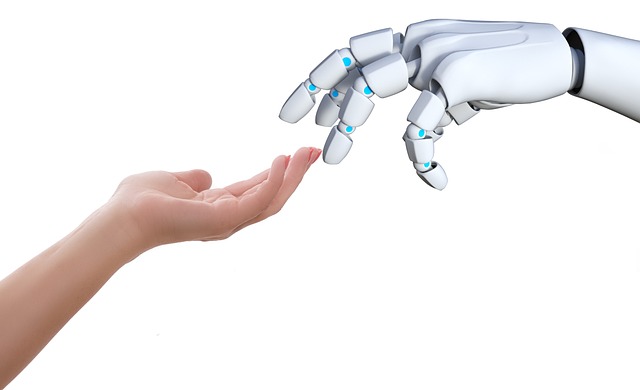Cobots, or collaborative robots, are built to work directly alongside humans—no cages, no fences. Think of them less like heavy-duty machines and more like smart, flexible tools that help with repetitive or physically demanding tasks. Traditional industrial robots, on the other hand, are built for speed and scale but typically operate in isolation due to safety risks.
As we head into 2024, this distinction matters more than ever. Labor shortages, evolving safety standards, and the need for nimble production workflows are driving interest in automation that’s human-friendly and easy to deploy. Unlike legacy robotics setups that often take months to integrate, cobots can be trained quickly and repurposed as needs shift.
For businesses, it all comes down to cost, adaptability, and workforce sustainability. Cobots reduce downtime and injury risks while boosting output—without replacing jobs wholesale. They’re not just a tech upgrade; they’re a strategic lever for companies trying to stay competitive without burning out their workers.
Safety and Human Interaction
Robots are getting better at working alongside people, but safety is still the first box to check. Sensors, fail-safes, and collision detection have come a long way. Still, human oversight is non-negotiable in most setups. The current trend is toward collaboration, not replacement. Smooth human-robot interaction is what keeps operations efficient and trustworthy.
Programming and Setup Complexity
It’s easier than it used to be, but “plug and play” is still a stretch. Setting up a robot for content capture, editing, or livestream management means dealing with custom workflows, interfaces, and bugs. Coding knowledge helps, or at least familiarity with visual scripting tools. Vloggers and content teams have to factor in some trial-and-error during onboarding.
Scalability and Footprint
Most robotic tools for vlogging are still built for single creators or small studios. Scaling production with robots adds complexity fast: syncing multiple devices, avoiding workflow collisions, and managing more moving parts. Plus, physical space matters. A robot arm might be sleek, but it still needs room to operate safely and without disruption.
Cost of Deployment and Maintenance
The upfront price isn’t low. Even consumer-grade robotic gear costs more than most tripod-and-camera setups. Then there’s ongoing maintenance—calibration, software updates, hardware tweaks. For creators bringing in revenue through ads, brand deals, or memberships, the return might be worth it. But for most, the robotics bill is still a long-term investment, not an easy win.
Collaborative robots, or cobots, aren’t here to take your job—they’re here to stand next to you and help get things done. No cages. No drama. They’re built to be safe, smart, and surprisingly easy to handle. Most come with plug-and-play setups that don’t need a robotics engineer to get rolling. That means a small shop or startup can go from unboxing to action in a day or two.
This matters especially for small and medium enterprises and tight workspaces where every square foot counts. A full-size industrial robot needs room and fences. Cobots fit on a bench.
They’re already showing up on lines for assembly, ticking through quality checks, and boxing up products faster than most teams can keep up. The goal isn’t replacement—it’s support. When boring and repetitive tasks move over to cobots, human workers get bandwidth back for the stuff that actually needs judgment and finesse.
These are the industrial workhorses of the robotics world. High payload and high precision make them ideal for repetitive, heavy-duty tasks where consistency trumps creativity. Think automotive welding, massive assembly lines, and high-speed material handling.
They operate best in isolated environments, far from people. Not just for safety—these machines are built to run around the clock with minimal interruption. That means human interference only slows things down.
Price tags are high, but that’s the cost of scale and throughput. Big factories use them not for flair, but for ROI. They’re not flashy. But they get the job done, and then some.
Choosing Between Cobots and Traditional Robots
When deciding on automation, you’ve got four key things to weigh: workload, available space, budget, and flexibility. If your lines run nonstop and power is the priority, traditional industrial robots still hold their own. They’re fast, strong, and built to repeat tasks thousands of times without blinking. But if your production changes often, or if you’re tight on space and cash, cobots are hard to beat. They don’t need cages, they’re typically easier to program, and they slot right into existing setups without full-scale overhauls.
The real trend? Hybrid environments. We’re seeing factories that use cobots for tasks like light assembly or packaging, while traditional robots handle the heavy lifting. Layer in some smart human labor, and you’ve got agility and output in one package. Manufacturers don’t just need more automation—they need the right kind, in the right spot. Getting that balance right is what sets the top performers apart.
Smarter Automation Through AI and Vision Systems
Advanced robotics continues to evolve as AI and machine vision systems become more capable, precise, and adaptable. Industrial applications are benefiting from this synergy, leading to more responsive machines and flexible workflows.
The Shift Toward Intelligent Automation
Modern automation is no longer limited to repetitive, pre-programmed movements. AI-powered robots now interpret their environments and make decisions in real time. Machine learning algorithms analyze vast amounts of data to improve task execution and adapt to variable conditions.
Key advancements include:
- Real-time object recognition and tracking
- Path correction based on sensory input
- Predictive maintenance enabled by data analytics
- Automated quality control through visual inspections
Machine Vision Boosts Both Cobots and Traditional Robots
Machine vision adds a crucial layer of functionality to all types of robots, whether they are collaborative (cobots) or traditional industrial models.
For Cobots:
- Enhances safe cooperation with human workers
- Enables gesture-based triggers and obstacle awareness
For Traditional Robots:
- Improves accuracy in complex or variable tasks
- Reduces setup and downtime through environmental scanning
Both robot types benefit from improved adaptability, expanded use cases, and higher productivity.
Explore more on this topic in our in-depth article: The Role of Machine Vision in Advanced Robotics Systems
Investing in new tools or systems always brings the same questions: what does it cost up front, and what’s the payoff down the line? For vloggers in 2024—especially those using AI and automation—the price tag on gear or software can be steep. But the long-term value? Time saved, output increased, and a smoother creative cycle. For those ready to scale or just stay sane, that’s often worth every dollar.
Training and integration are wild cards. Some tools promise plug-and-play but end up chewing through days of learning and adjustment. Others merge fast with your current setup, minimizing downtime. Before jumping in, creators need to gauge how long it’ll take to integrate and whether their workflow can handle the switch.
Compare that to broader industries and their adoption speeds. Electronics tends to move fast—constant updates, fierce competition. Food and beverage is slower, more risk-averse. Logistics is a mix—interested in speed but deliberate about execution. Vlogging shares traits with all three. Rapid innovation like electronics, personal stakes like food, and increasingly complex systems like logistics.
The smartest creators aren’t just asking “what’s new?” They’re asking, “what’s worth it?”
Collaborative robots, or cobots, are becoming a staple in modern workplaces. Unlike traditional industrial robots that are caged off for safety, cobots are designed to work right alongside people. They don’t just perform repetitive tasks but assist with precision handling, inspection, assembly prep, and more. With built-in sensors, softer designs, and real-time data feedback, cobots are enabling safer, smarter environments where human workers can focus on higher-level problem-solving.
That said, traditional robotics still rules where speed, scale, and volume are the priorities. Think automotive manufacturing lines or electronics assembly. These machines are built for nonstop output at industrial scale, often cranking out thousands of units a day with tight tolerances. No human collaboration needed, just brute production.
This shift isn’t about replacing one with the other. It’s about using the right tool for the job. Cobots handle flexibility and frequent retooling better. Traditional robots take over when efficiency and volume are non-negotiable. The future of automation is not either-or. It’s a blend.
Summing Up: Integration Beats Isolation
In the race to stay competitive, tossing a robot into the workflow without a clear plan won’t cut it. Whether you’re working with a cobot or a traditional industrial robot, success comes down to how well it fits within your existing system. Integration is the name of the game. The most efficient setups are built on purpose, not patches.
Automation is evolving at a pace that doesn’t leave much room for rigidity. What worked last quarter might slow you down next time around. So the mindset needs to shift from chasing the newest gear to building flexibility into your process. That’s how you future-proof your setup. In short, don’t let your tools dictate your strategy. Align them to it.


 Isaac Lesureneric is a tech author at gfxrobotection focusing on digital security, automation, and emerging technologies. He shares clear, practical insights to help readers understand and adapt to the rapidly changing tech world.
Isaac Lesureneric is a tech author at gfxrobotection focusing on digital security, automation, and emerging technologies. He shares clear, practical insights to help readers understand and adapt to the rapidly changing tech world.

